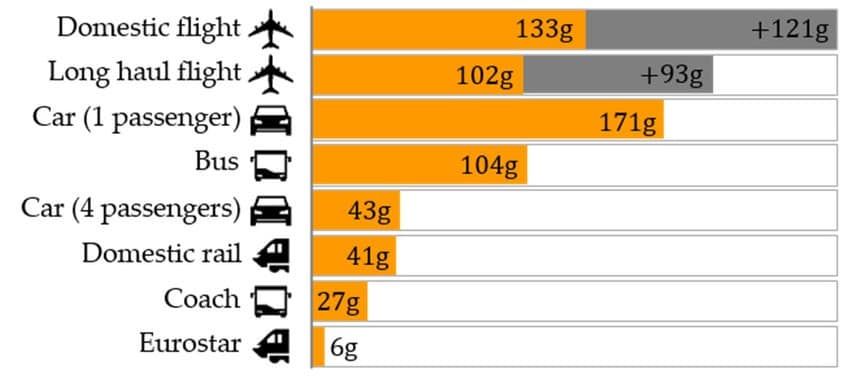France has formally banned domestic flights on short routes that can be covered by train to cut the aviation’s carbon footprint.
The ban was proposed two years ago and finally came into effect via a decree. It applies to public flights between destinations where a train travel of less than two-and-a-half hours is available.
The change will rule out air travels between Paris and cities such as Nantes, Lyon and Bordeaux. The ban doesn’t cover connecting flights.
Reducing Aviation Carbon Footprint
The aviation sector is one of the fastest-growing sources of carbon emissions that drive global climate change. Airlines emit more than 900 million tonnes of CO2 annually, accounting for 2% of the global CO2 emissions.
The International Air Transport Association (IATA) thinks that the present airline emissions goals are not ambitious enough. To bring the industry to a net zero emission, airlines must show bold commitments. Some major airline companies opt to invest in scaling up hydrogen-electric aviation solutions while others promote SAF (sustainable aviation fuel).
But when COVID-19 pandemic hit, airlines were largely affected as the number of flights declined to over 40% from 2019. France decided to employ bolder rules.
Some airlines had requested the European Commission to assess if the French government’s decision was legal. While critics called the measure “symbolic bans”.
Laurent Donceel from the industry group Airlines for Europe (A4E) pointed out that governments should support “real and significant solutions” to aviation emissions, instead of “symbolic bans”. He added that “banning these trips will only have minimal effects” on the industry’s carbon footprint.
A4E asserted its own net zero by 2050 plan, which includes shifting to clean fuel sources and flying battery- or hydrogen-powered airplanes.
Symbolic Ban or Essential Step?
France is home to a large high-speed rail network. The law specifies that train services on the banned routes must be satisfactory, meaning frequent, timely and well-connected.
The alternative train travel must be able to meet the passenger’s needs who would otherwise fly. The rail network must also absorb the surge in passengers.
People on affected flights must be able to travel back and forth via train on the same day after spending 8 hours on their destination.
According to a French consumer group UFC-Que Choisir, a “plane emits 77x more CO2 per passenger than a train” on those short-haul routes. But train travel costs less though it takes forty minutes more.
The group also called on assurance that the railway won’t increase ticket prices or lower their service quality.
French transport minister, Clément Beaune, hailed the move as an “essential step in reducing GHG emissions”. He also said that it was in line with the government’s policy of promoting the use of transport modes that pollute less.
CO2 Footprint Per Mode of Transport (per passenger per km)

The move comes as France has also been debating how to slash aviation footprint from private jets. The use of these jets by rich people prompts a big concern for the climate.
Earlier this year, Greenpeace revealed that the number of flights by private jets in Europe in 2022 increased by 64%. It hit a record high of 572,000+ flights. It was more than doubled last year, surpassing the annual per capita carbon emissions of 550,000 EU citizens.
While Green MPs have been calling to ban small private air travels, Beaune decided to impose a higher climate charge for private flyers from next year.

